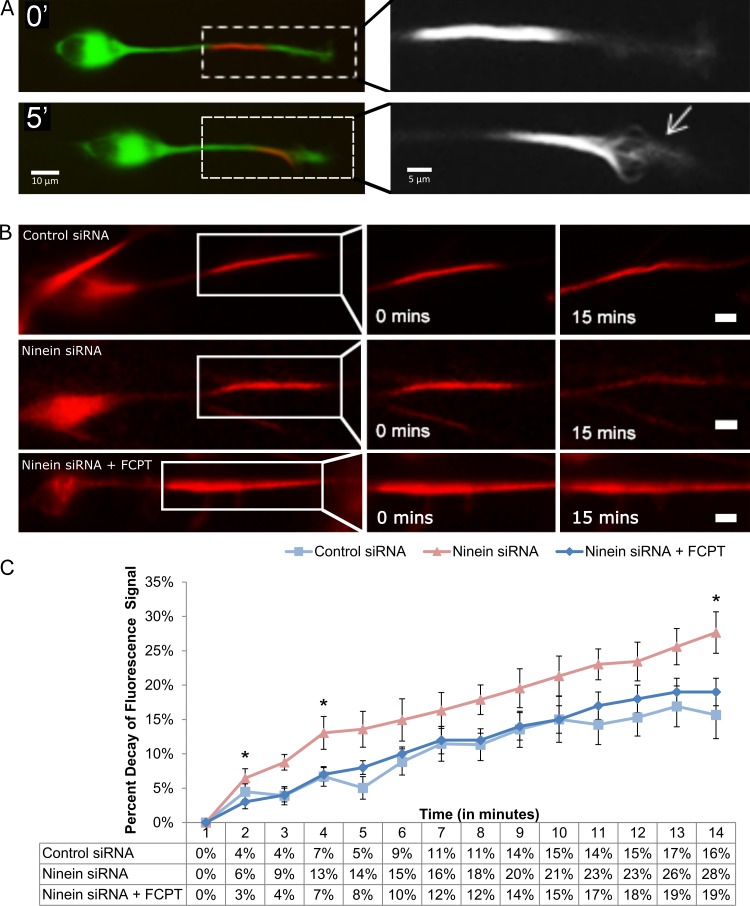Figure 4.
Ninein siRNA treatment leads to increased MT sliding in the leading process of migratory neurons. (A) A cerebellar migratory neuron transfected with tdEos-tubulin. (top) A distinguished converted region in the leading process of a neuron treated with control siRNA. Leading process is magnified on the right. (bottom) After 5 min, individual MTs (indicated by the arrow) are observed sliding out of the converted region. (B, top) Migratory neuron treated with control siRNA. Modest signal decay is observed after 15 min. (middle) After treatment with ninein siRNA, significant signal decay can be seen. (bottom) Treating ninein-depleted migratory neurons with FCPT reduces the rate of signal decay to control levels. (C) Quantification of percent decay of fluorescent tubulin signal. Data table shows values under control siRNA (n = 15), ninein siRNA (n = 15), and ninein siRNA + FCPT conditions (n = 15 per group; *, P < 0.05). Bars, 10 µm. Data are represented as mean ± SEM.

